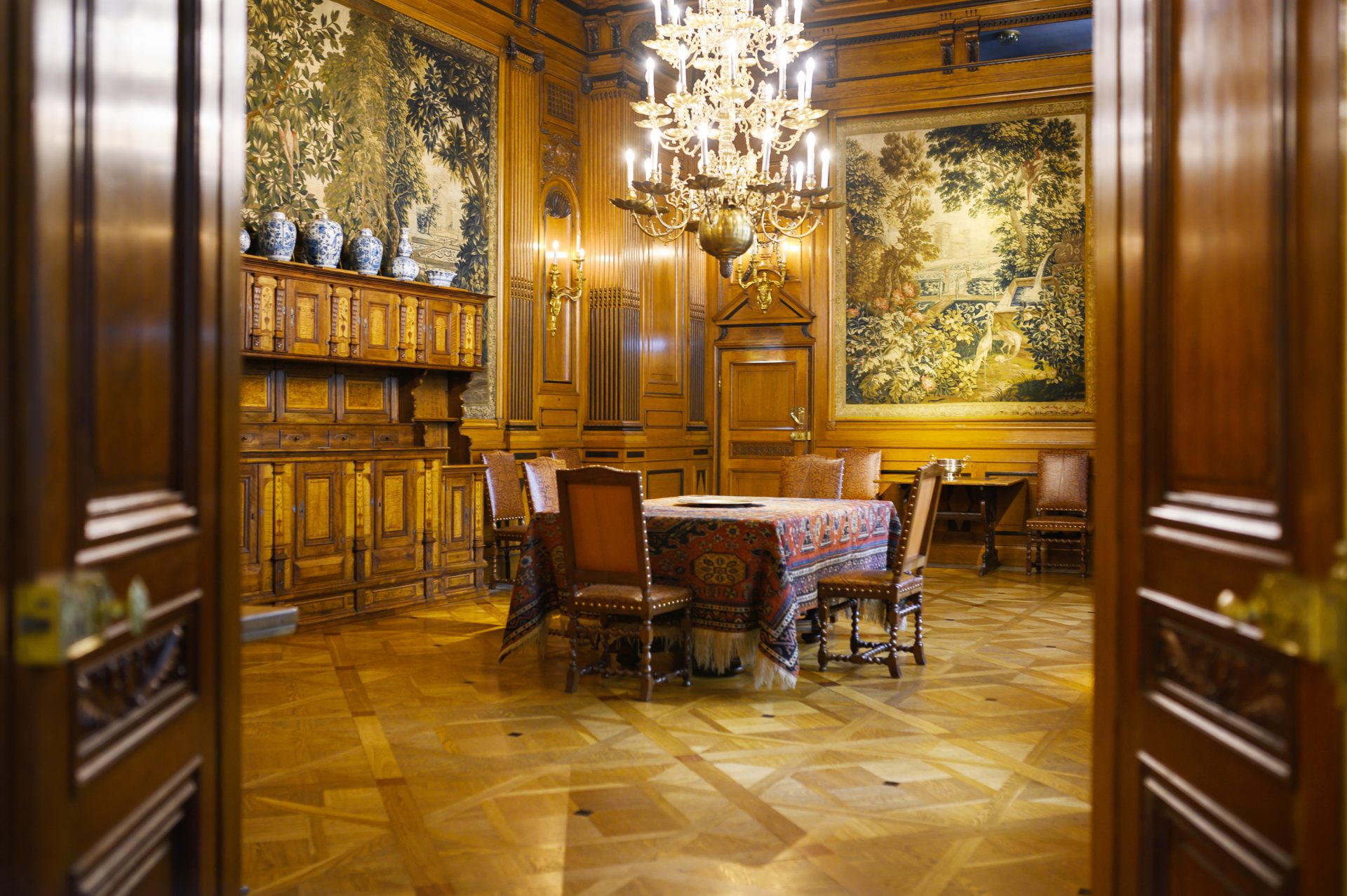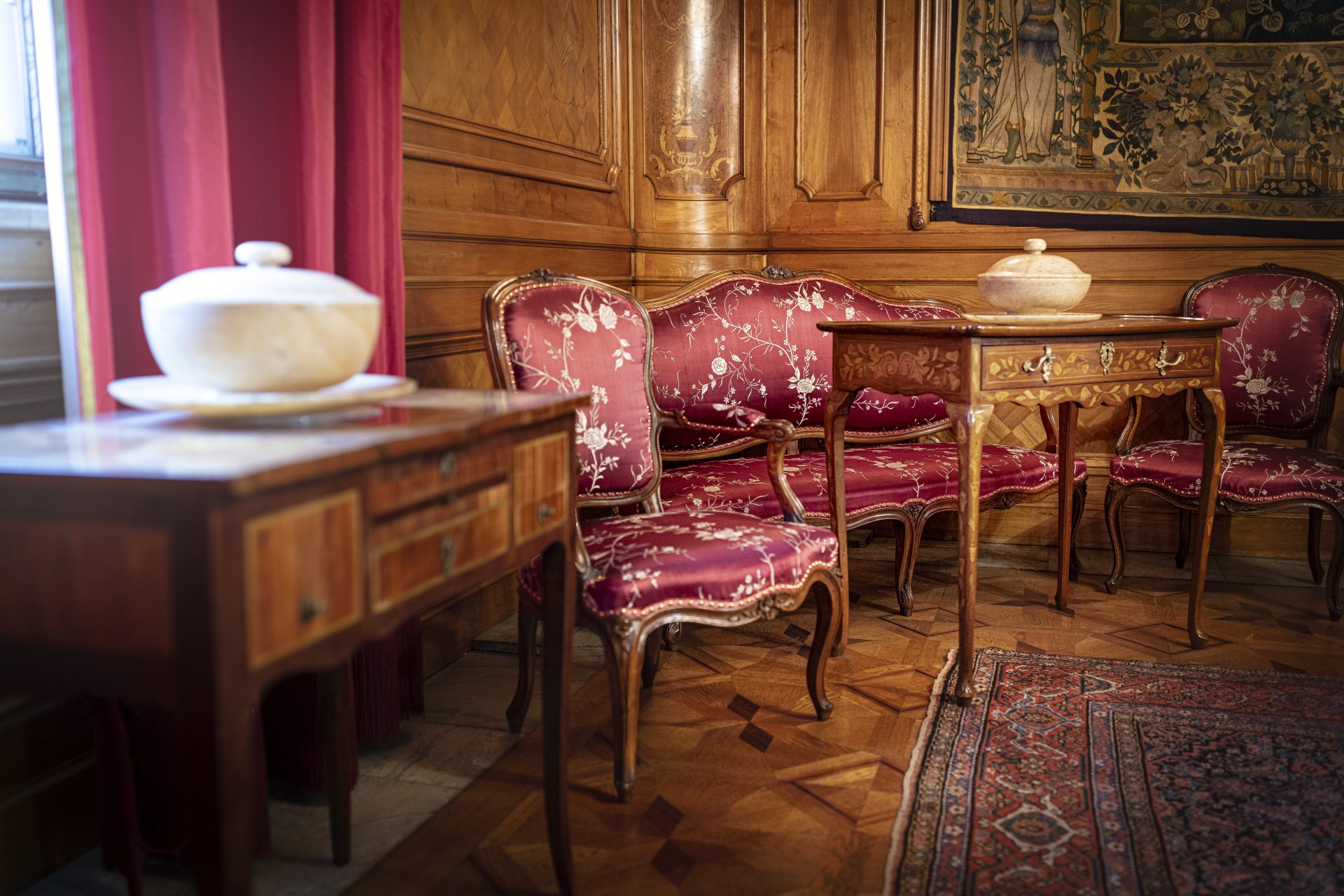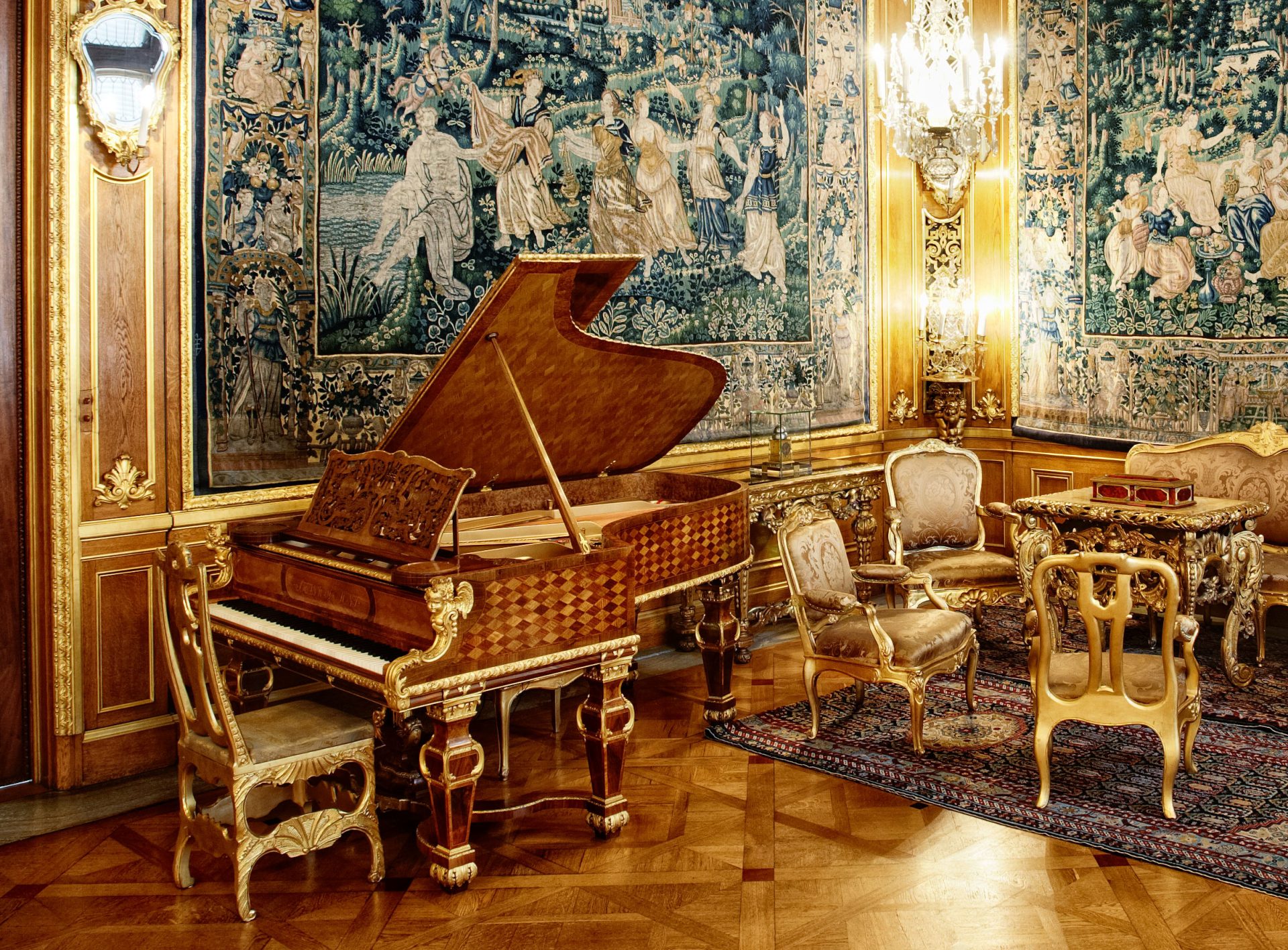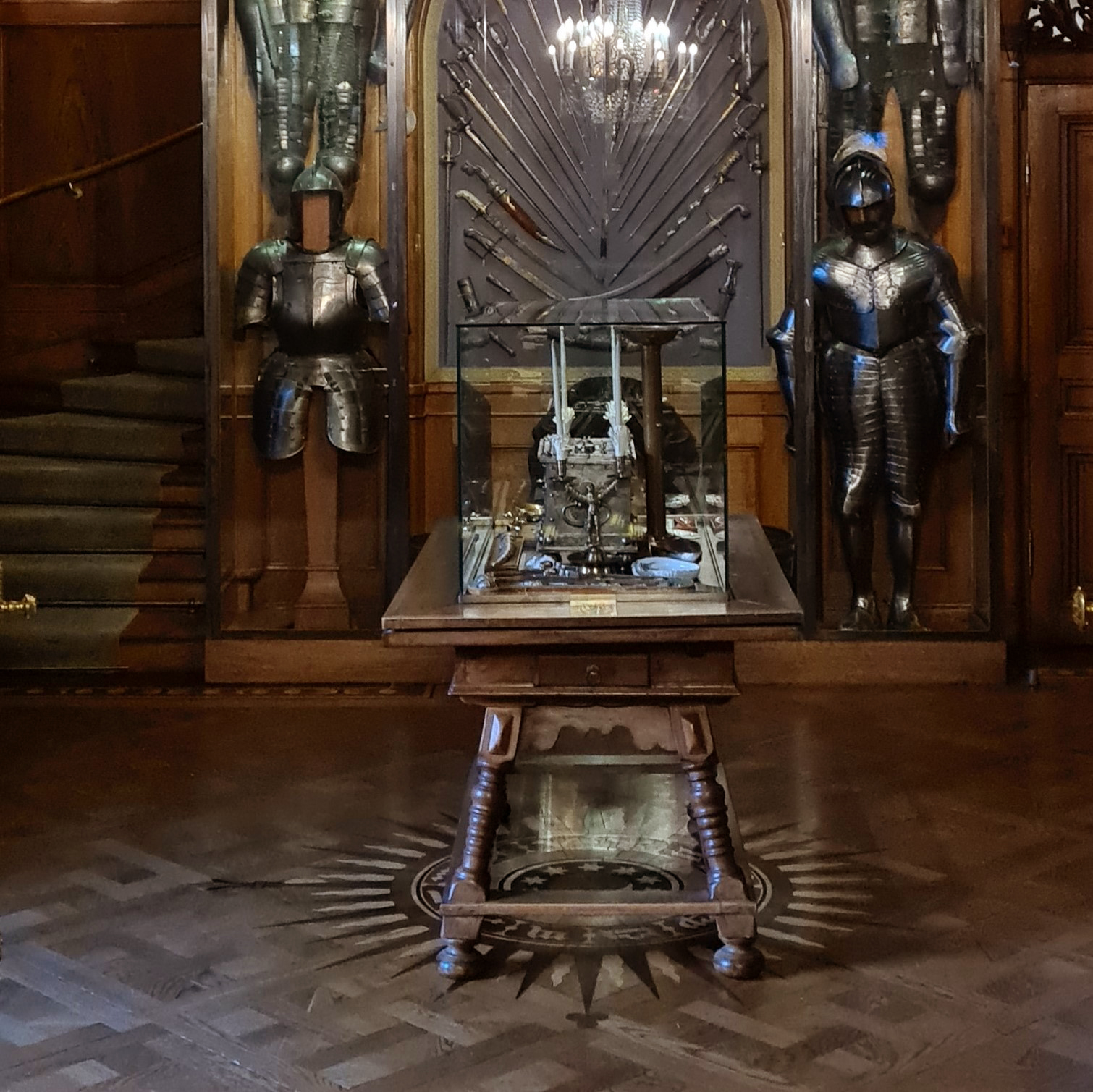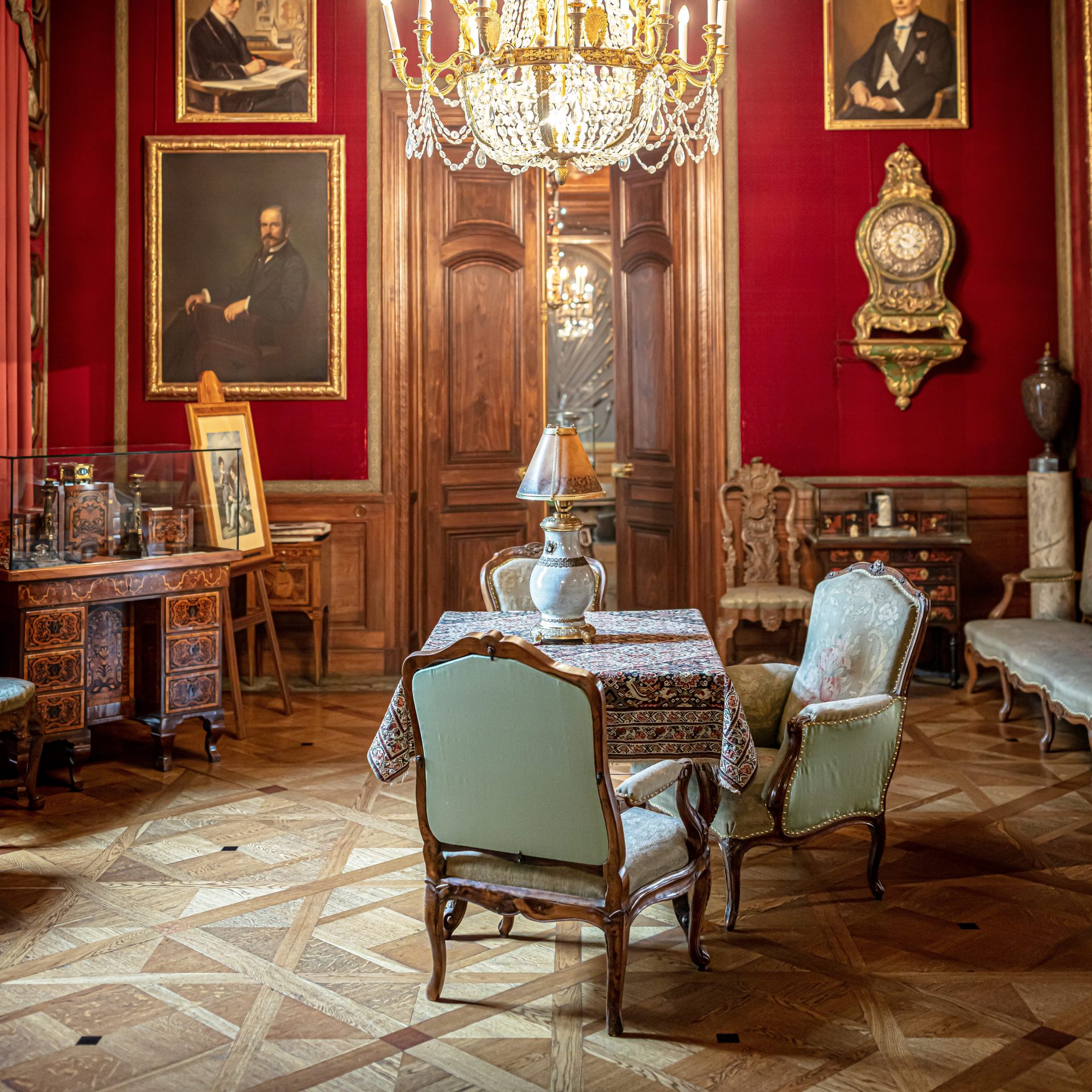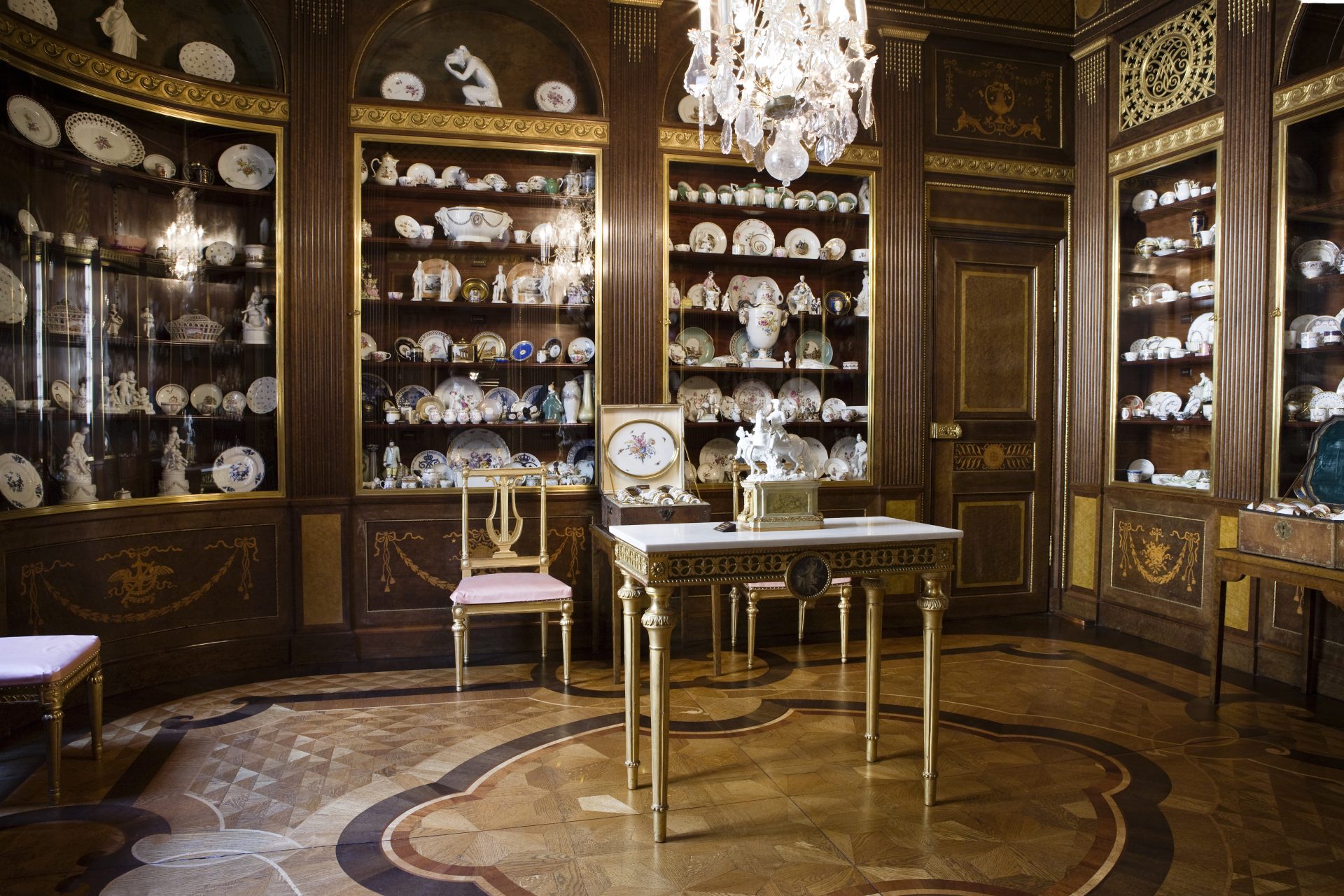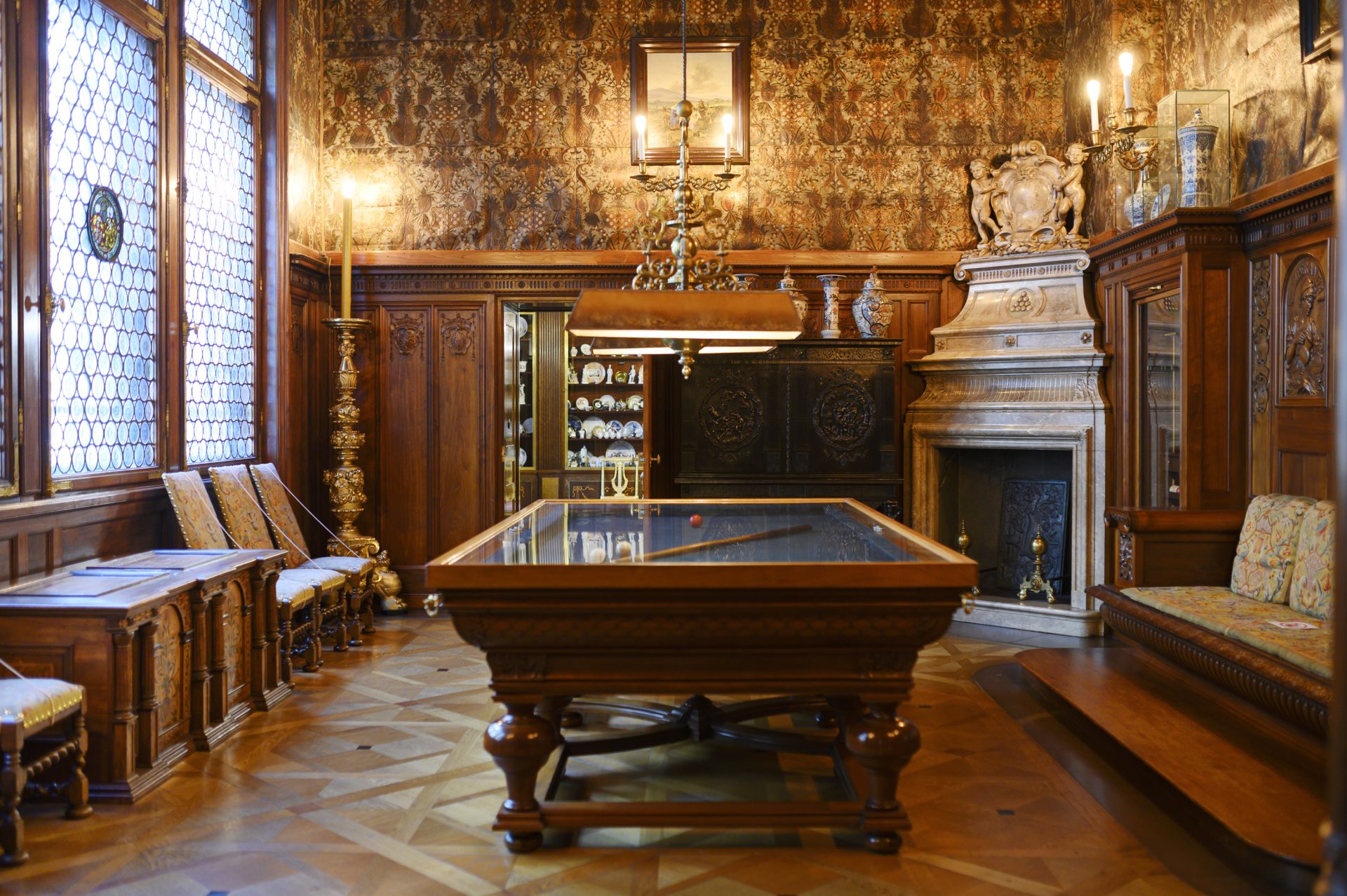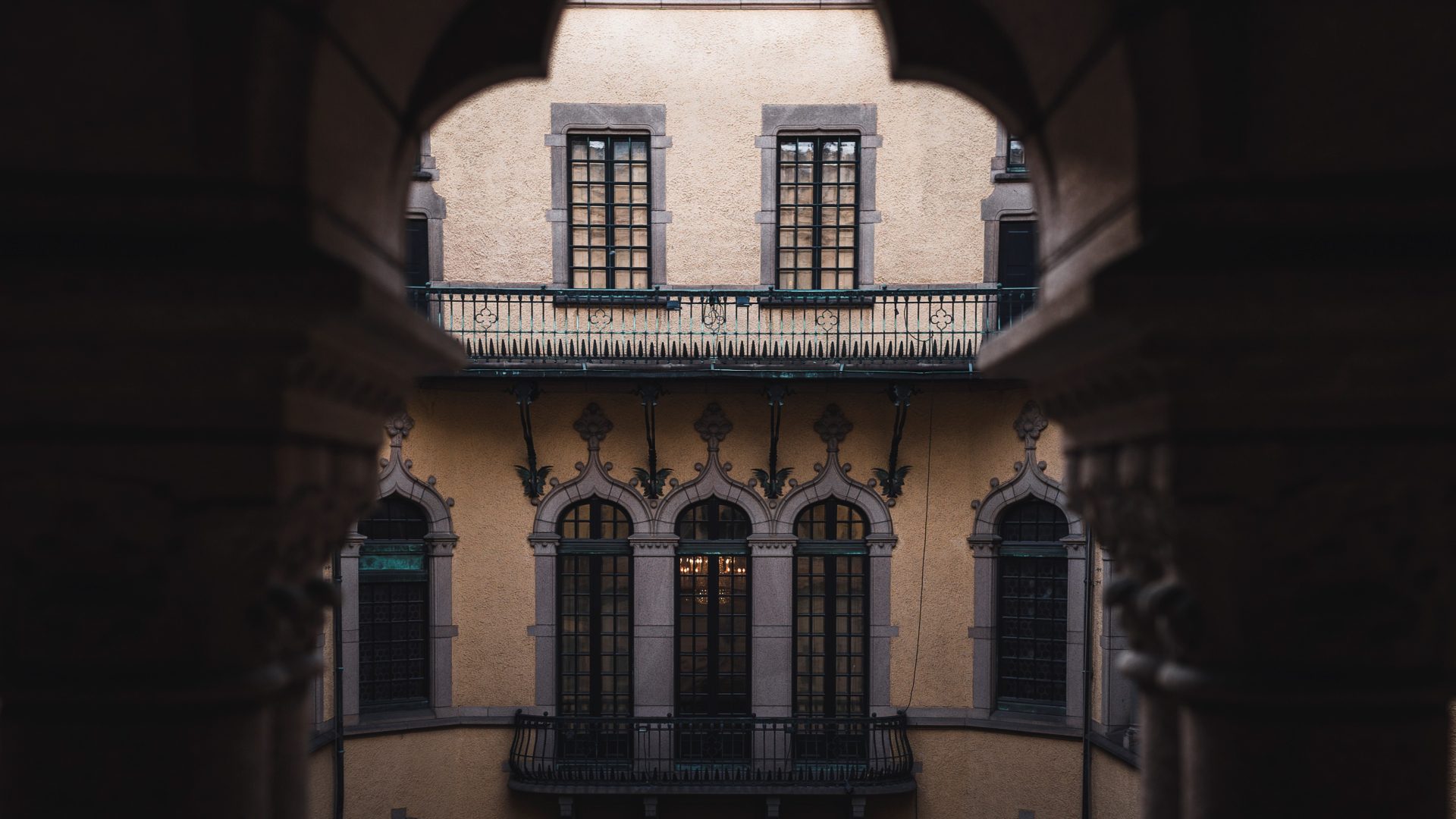
Visit at your own pace
There is a possibility for you to visit the Hallwyl Museum at your own pace. The first floor with its lounges, drawing rooms and dining room is open for visits.

In the first floor, for example, you’ll find the Great Drawing Room, or “my little Klondike” as Wilhelmina von Hallwyl called the room. Click on the numbers on the drawing and learn more about the various rooms. If you want to learn more about each room, you can do so in the drawing below.

